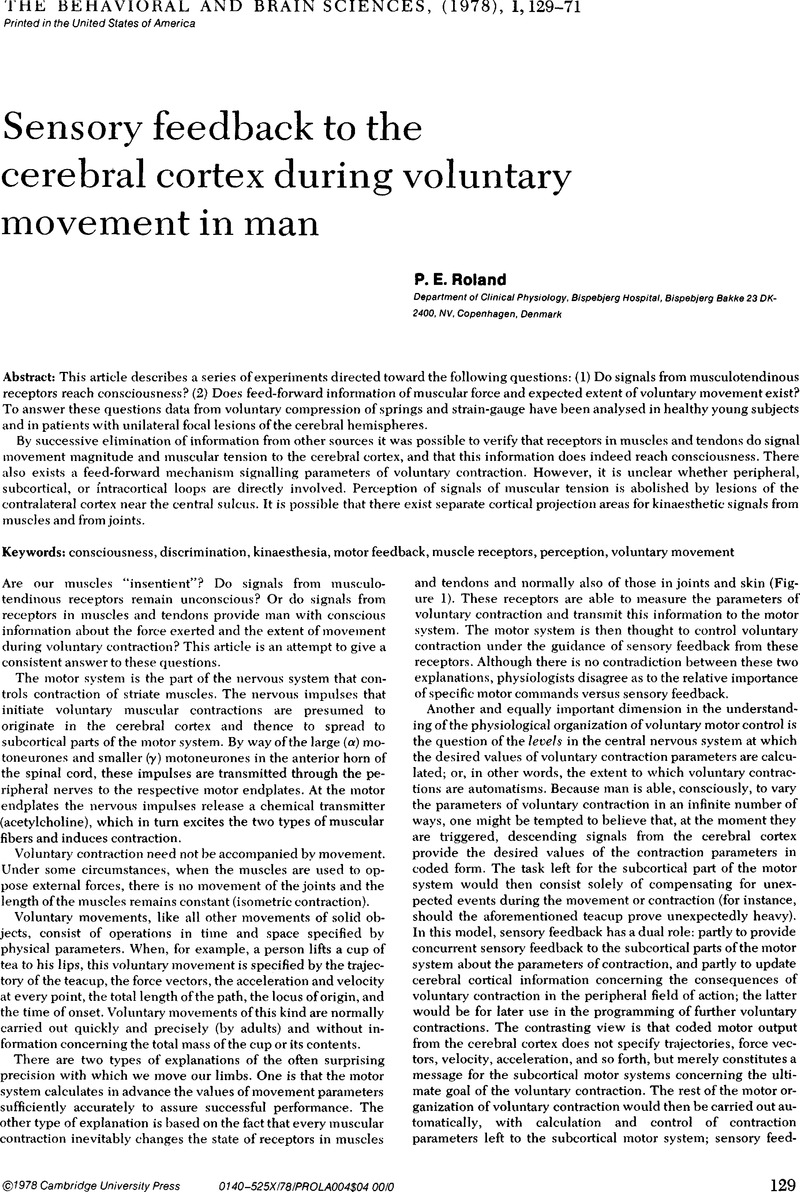Crossref Citations
This article has been cited by the following publications. This list is generated based on data provided by Crossref.
Jones, John Alfred
1981.
Preparing contingency plans for public speaking situations.
Communication Education,
Vol. 30,
Issue. 4,
p.
423.
Inbar, Gideon F.
1982.
The role of proprioceptors and the adaptive control of limb movement.
Behavioral and Brain Sciences,
Vol. 5,
Issue. 4,
p.
551.
Ito, Masao
1982.
The CNS as a multivariable control system.
Behavioral and Brain Sciences,
Vol. 5,
Issue. 4,
p.
552.
Hoffer, J. A.
1982.
Central control and reflex regulation of mechanical impedance: The basis for a unified motor-control scheme.
Behavioral and Brain Sciences,
Vol. 5,
Issue. 4,
p.
548.
Bässler, Ulrich
1982.
The stick insect as a model for muscle control.
Behavioral and Brain Sciences,
Vol. 5,
Issue. 4,
p.
542.
Alexander, R. McN.
1982.
Servos and regulators in the control of leg muscles.
Behavioral and Brain Sciences,
Vol. 5,
Issue. 4,
p.
542.
Cruse, H.
1982.
Are position-control systems active during leg movement of walking arthropods?.
Behavioral and Brain Sciences,
Vol. 5,
Issue. 4,
p.
543.
Mortimer, James A.
and
Eisenberg, Peter
1982.
How modest is the gain of the stretch reflex?.
Behavioral and Brain Sciences,
Vol. 5,
Issue. 4,
p.
557.
English, Arthur W.
1982.
Are whole muscles the fundamental substrate for the CNS control of movement?.
Behavioral and Brain Sciences,
Vol. 5,
Issue. 4,
p.
544.
Stelmach, George E.
and
Diggles, Virginia A.
1982.
Motor equivalence and distributed control: Evidence for nonspecific muscle commands.
Behavioral and Brain Sciences,
Vol. 5,
Issue. 4,
p.
566.
Gottlieb, Gerald L.
and
Agarwal, Gyan C.
1982.
Control theoretic concepts and motor control.
Behavioral and Brain Sciences,
Vol. 5,
Issue. 4,
p.
546.
Kearney, R. E.
and
Hunter, I. W.
1982.
Systems analysis in the study of the motor-control system: Control theory alone is insufficient.
Behavioral and Brain Sciences,
Vol. 5,
Issue. 4,
p.
553.
Vilis, T.
1982.
Must the nervous system be limited to afferent variables in the control of limb movement?.
Behavioral and Brain Sciences,
Vol. 5,
Issue. 4,
p.
568.
Terzuolo, C. A.
and
Soechting, J. F.
1982.
Reductionism cannot answer questions of movement control.
Behavioral and Brain Sciences,
Vol. 5,
Issue. 4,
p.
567.
Pond, Caroline M.
1982.
The importance of connective tissue within and between muscles.
Behavioral and Brain Sciences,
Vol. 5,
Issue. 4,
p.
562.
Roberts, T. D. M.
1982.
Movement control: Signal or strategy?.
Behavioral and Brain Sciences,
Vol. 5,
Issue. 4,
p.
563.
Harvey, Nigel
and
Greer, Kerry
1982.
Force and stiffness: Further considerations.
Behavioral and Brain Sciences,
Vol. 5,
Issue. 4,
p.
547.
Bawa, P. N. S.
and
Dickinson, J.
1982.
Force as the controlling muscle variable in limb movement.
Behavioral and Brain Sciences,
Vol. 5,
Issue. 4,
p.
543.
Stein, R. B.
1982.
What muscle variable(s) does the nervous system control in limb movements?.
Behavioral and Brain Sciences,
Vol. 5,
Issue. 4,
p.
535.
Neilson, Peter D.
1982.
Tonic stretch reflex during voluntary activity.
Behavioral and Brain Sciences,
Vol. 5,
Issue. 4,
p.
559.



